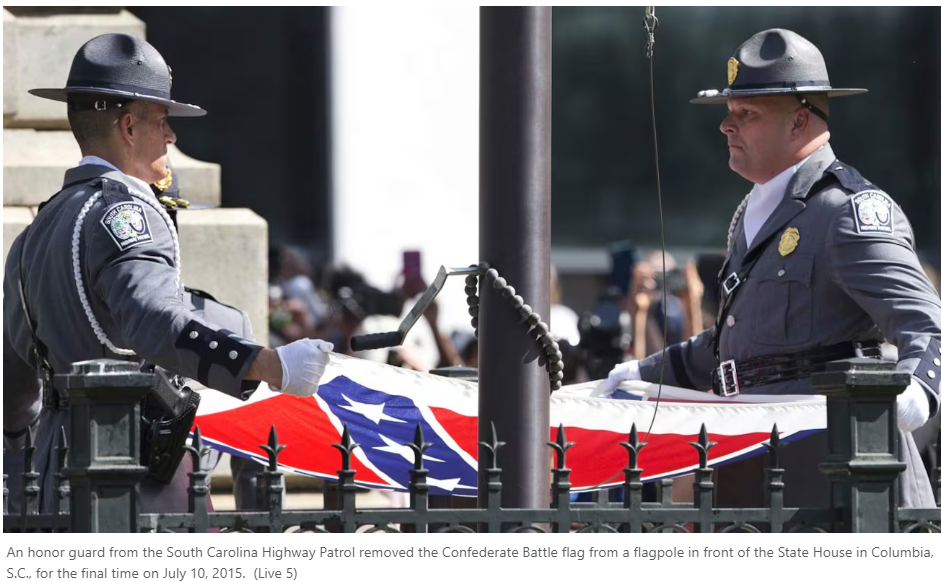Six years ago, amateur historian John Richter rocked the world of Civil War scholars when he downloaded a series of digital photos showing the dedication![]() of the Soldiers’ National Cemetery on Nov. 19, 1863, at Gettysburg, Pa.
of the Soldiers’ National Cemetery on Nov. 19, 1863, at Gettysburg, Pa.
In the sea of pixelated faces, Richter found a blur that looked like President Abraham Lincoln on horseback, saluting the troops as he arrived to deliver his famed Gettysburg Address. Historians celebrated the find, calling![]() it only the second photo ever of Lincoln at Gettysburg.
it only the second photo ever of Lincoln at Gettysburg.
On the cusp of the speech’s 150th anniversary![]() , historians are again talking about the photos: Another amateur, aided by improved technology, says he, too, has spotted Lincoln in the crowd — only he’s a few yards to the right, in front of the speakers’ stand, says Christopher Oakley, an assistant professor of new media at UNC Asheville.
, historians are again talking about the photos: Another amateur, aided by improved technology, says he, too, has spotted Lincoln in the crowd — only he’s a few yards to the right, in front of the speakers’ stand, says Christopher Oakley, an assistant professor of new media at UNC Asheville.
The figure on horseback? Probably just a local official with a beard and stovepipe hat.
Not even Abraham Lincoln could be in two places at once, so Oakley’s find has divided scholars, including a few who vouched for Richter in 2007 and who now say Oakley has gotten it right.

Civil War photo historians in 2007 identified a man on a horse as Abraham Lincoln in this image shot at the Gettysburg cemetery dedication ceremony in 1863. UNCA professor Christopher Oakley says he has found Lincoln elsewhere in the photo – near the speaker stand from which the president delivered the Gettysburg Address – and that the man on the horse has epaulets on his jacket and long hair, meaning he could not be Lincoln. / Special to the Citizen-Times
“For everyone who is seriously interested in that day and in Lincoln at Gettysburg — and there are thousands who are — this merits a very close look,” says T.A. Frail, a senior editor at Smithsonian magazine, which is publishing an annotated version of the disputed image in its October issue (http://bit.ly/1eCUooj), alongside a history of the controversy.
So far, at least, the debate has been “mostly friendly,” says Oakley, a former Disney and DreamWorks animator who teaches animation at UNCA. He stumbled upon Richter’s find while helping students![]() re-create the 1863 ceremony for the university’s Virtual Lincoln Project, a planned interactive digital 3D animation.
re-create the 1863 ceremony for the university’s Virtual Lincoln Project, a planned interactive digital 3D animation.
What was intended as a two-semester project has stretched to three years, says Oakley, 51, a lifelong “Lincoln freak.” He began staring at the disputed image — part of a pair of stereoscopic images by Alexander Gardner — in a bid to help a student![]() identify faces in the wide crowd shot. He soon found William Seward, Lincoln’s secretary of state, and remembered that accounts of the ceremony placed Seward close to Lincoln.
identify faces in the wide crowd shot. He soon found William Seward, Lincoln’s secretary of state, and remembered that accounts of the ceremony placed Seward close to Lincoln.
Oakley concluded that Lincoln had to be nearby. A closer look revealed the 16th president, or at least a blurry figure that many scholars say is Lincoln.
Oakley’s advantage may come down not only to his visual skills as an animator but also to dumb luck. In 2007, Richter tried unsuccessfully to get the Library of Congress to grant him access to an improved digital scan of the left-hand negative of Gardner’s original stereoscopic image.
On a lark, Oakley surfed over to the library’s website, clicked its “Ask a Librarian” button and asked if they’d ever produced a high-resolution image of the negative. They hadn’t, a librarian replied, but for $73 they would.
“It’s the best $73 I ever spent,” Oakley says. A week later, he got the file. “As soon as I had that in my hands, I was able to look at it much more clearly.”
In the end, “everything just fit,” he says. The figure on horseback had hair that was too long, a beard that was too full and epaulets on his shoulders. Lincoln would have worn a plain overcoat. And he wouldn’t have been saluting the troops — that practice wasn’t taken up by presidents until more than 100 years later, when Ronald Reagan started doing it.
Smithsonian’s Frail admits that the new scholarship “doesn’t change our understanding” of what happened at Gettysburg, “but it may change our feeling of proximity.”
Oakley says the find “clarifies the record just a bit,” adding that he also discovered what appears to be Gardner himself posing in his own photo “like Alfred Hitchcock. He’s standing very near the camera and is smiling.”
That means Gardner’s assistant, not Gardner himself, took the photo — which may be the biggest find of all.
-Greg Toppo, Asheville Citizen-Times


